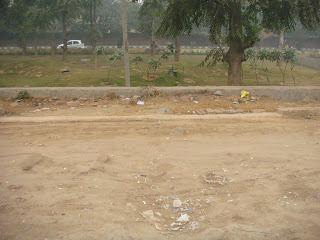RuUrban Model for Development in Goa
Beginning in January 2011, the students of M.Arch Environmental Architecture, BNCA, Pune will embark on their Planning Studio in Goa. For this purpose, I visited Goa last week to understand the environmental pressures confronting Goa and meet with the various stakeholders who are directly and indirectly participating in the Goa Regional Plan. At this time of the year, Goa was lush and vibrantly green, the raindrops making a continuous patter on the river Mandovi. Panjim was sleepy, with very few tourists and the beaches were serene while the sea was stormy. Once again, after 13 years, I experienced a laid back Goa that I had encountered when I had interned with Ar Dean D'Cruz in 1997. But this time the urban pressures were evident and threatning. The urban forces and the rural borders seemed intermingled and I felt a pang of regret that the charming, sleepy villages of Goa may soon be gone, replaced by the urbane tourist infrastructure demanded by the Urban Global Tourist. The Goan...
